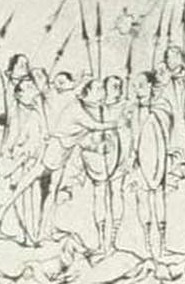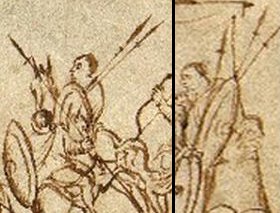| Joseph Gora wrote: |
| Hi all,
I know this ios an old thread, but I was wondering what people thought of this: https://www.youtube.com/watch?v=VsZnTCQptWc Yes it's that popular tv show - but the test seems much better than simply shooting an arrow into a few planks and declaring victory for the archer. Good wood, shaping, and a decent hide cover seem to make a considerable difference. And note that the wood here is thin. Cheers, Joseph |
Very interesting footage of how the different shields absorbs the energy (or not).
It seems to be a domed Carolingian shield type, they are reproducing.
For difference in combat between this and the viking shield see the new video of Roland Warzecha: https://www.youtube.com/watch?v=FrzOHN2rzE8
With this shield you are "shield-passive" and use it as mobile armour, whereas a viking shield is an offensive weapon used to make shield-binds.
It seems reasonable that two different kind of viking shields would have been in use.
1) A thin uncovered shield for duals, where the splitting effect of blows actually can work as a sword catcher.
2) A thicker rawhide-covered shield for battlefield combat. [but viking shield are still fairly thin, so you can move them fast as they are not mobile armour to the same degree as the Carolingian shield].

